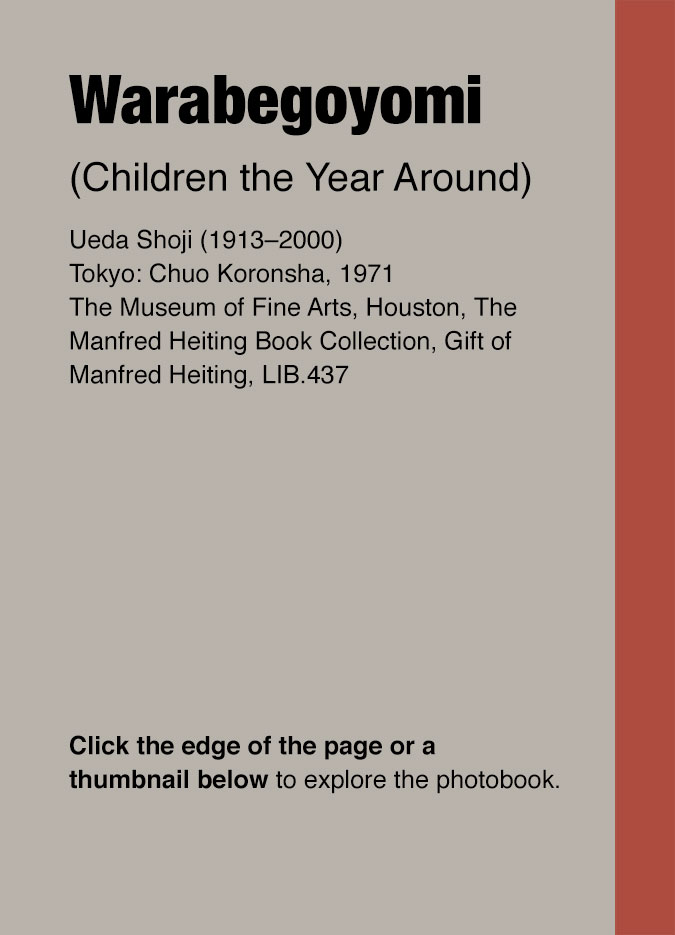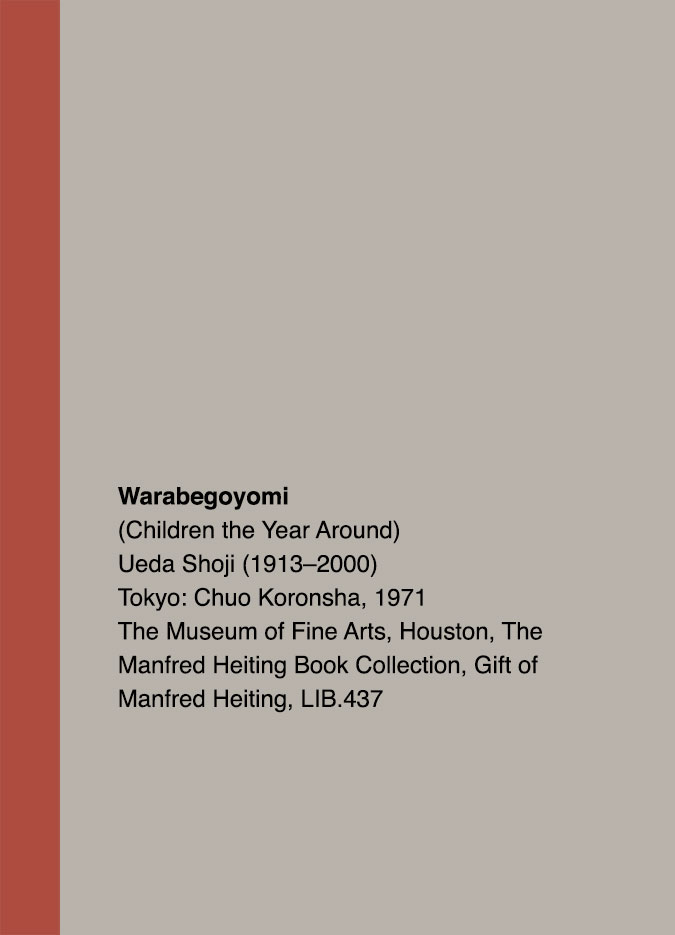















































Ueda Shoji’s 1971 photobook Warabegoyomi gathers his images of children near his hometown in western Japan. Arranged in four chapters according to the seasons, the book conveys his attachment to life in a familiar landscape. As explained in the introduction by Tsutomu Minakami:
Such photographs all smell of the sea. They all [sic] lonely, desolate. But they give no impression whatever of darkness or gloom. The photographs are the shapes of houses, trees, bridges and old temples which have all taken root in the area.
The children who pass through and among those shapes are all alive. Ueda’s pictures, whether of an old forgotten harbor or of a group of people, succeed in moving the heart because their subjects are not dead but filled with life. The life in the seasons and in the children is transfused to the mountains and sea and trees in the background until all nature takes on life . . .
It is the hometown itself that is alive in the photographs. The mists of the long winter and summer, and of the short spring and autumn, are also alive.
Warabegoyomi (Children the Year Around)
Ueda Shoji (1913–2000)
Tokyo: Chuo Koronsha, 1971
The Museum of Fine Arts, Houston, The Manfred Heiting Book Collection, Gift of Manfred Heiting, LIB.437